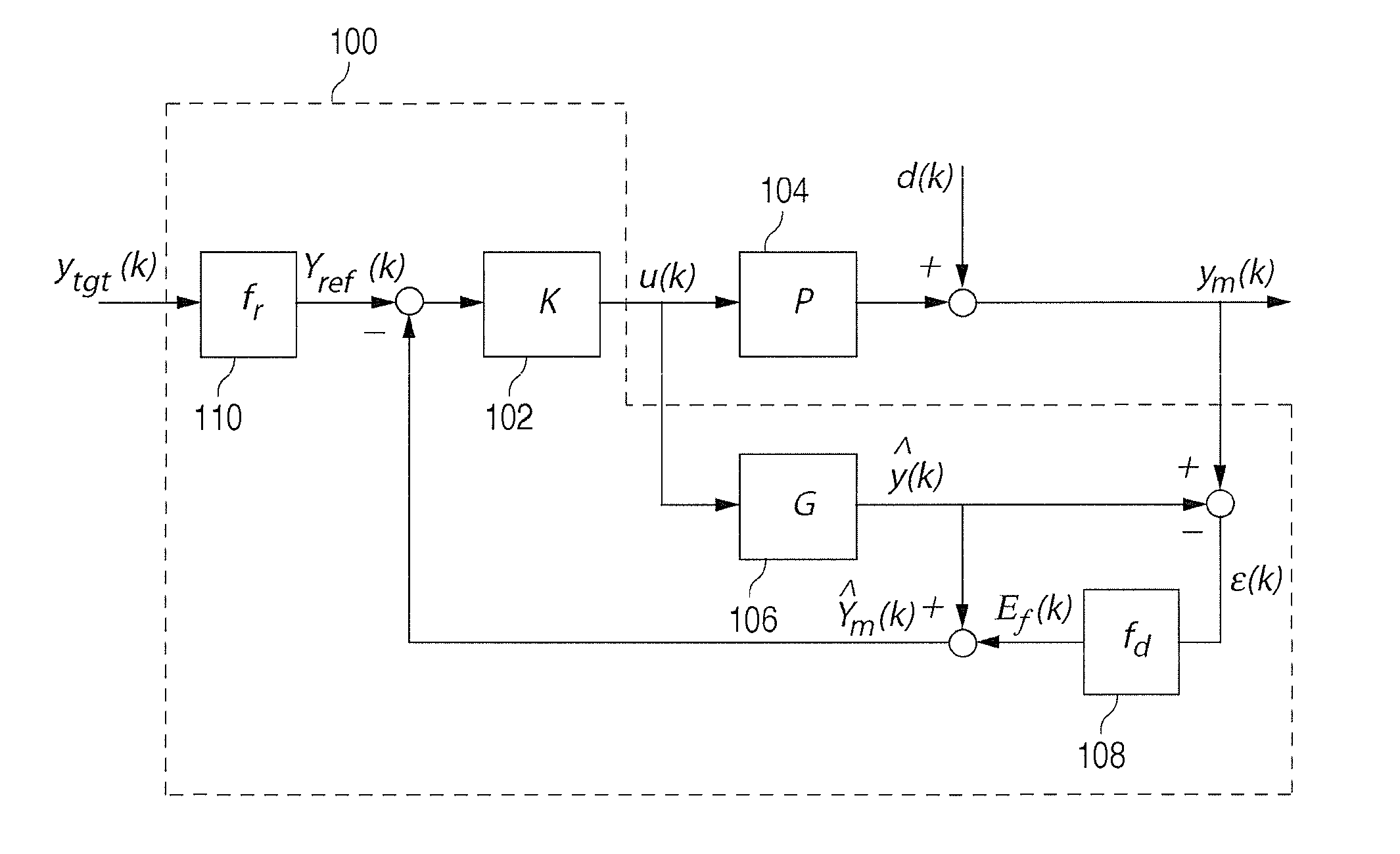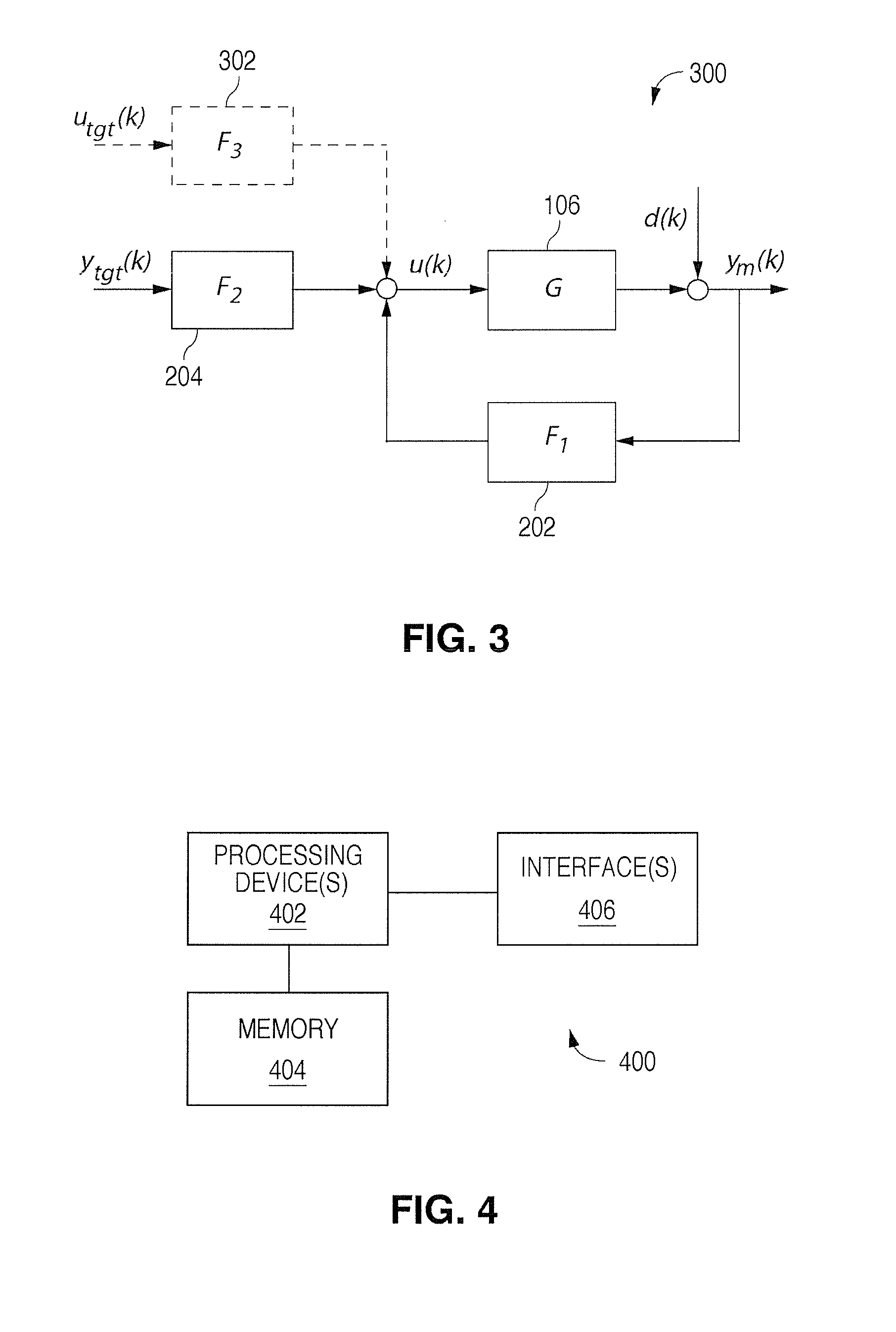Technique for converting a model predictive control (MPC) system into an explicit two-degrees of freedom (2DOF) control system
a control system and model predictive technology, applied in the direction of electric controllers, controllers with particular characteristics, instruments, etc., can solve the problems of limiting the acceptance of mpc in some industries or applications, requiring a certain level of control knowledge, and often non-intuitive configuration of mpc controllers
- Summary
- Abstract
- Description
- Claims
- Application Information
AI Technical Summary
Benefits of technology
Problems solved by technology
Method used
Image
Examples
Embodiment Construction
[0015]FIGS. 1 through 7, discussed below, and the various embodiments used to describe the principles of the present invention in this patent document are by way of illustration only and should not be construed in any way to limit the scope of the invention. Those skilled in the art will understand that the principles of the invention may be implemented in any type of suitably arranged device or system.
[0016]In general, this disclosure describes a technique for converting a model predictive control (MPC) system into an explicit two-degrees of freedom (2DOF) control system. For example, an MPC controller typically operates by adjusting one or more manipulated variables (MVs) to cause changes to one or more controlled variables (CVs). The manipulated variables are typically adjusted using actuators, and the controlled variables are typically measured using sensors (where the sensor measurements are used for feedback). The MPC controller typically attempts to keep each controlled varia...
PUM
 Login to View More
Login to View More Abstract
Description
Claims
Application Information
 Login to View More
Login to View More - R&D
- Intellectual Property
- Life Sciences
- Materials
- Tech Scout
- Unparalleled Data Quality
- Higher Quality Content
- 60% Fewer Hallucinations
Browse by: Latest US Patents, China's latest patents, Technical Efficacy Thesaurus, Application Domain, Technology Topic, Popular Technical Reports.
© 2025 PatSnap. All rights reserved.Legal|Privacy policy|Modern Slavery Act Transparency Statement|Sitemap|About US| Contact US: help@patsnap.com



